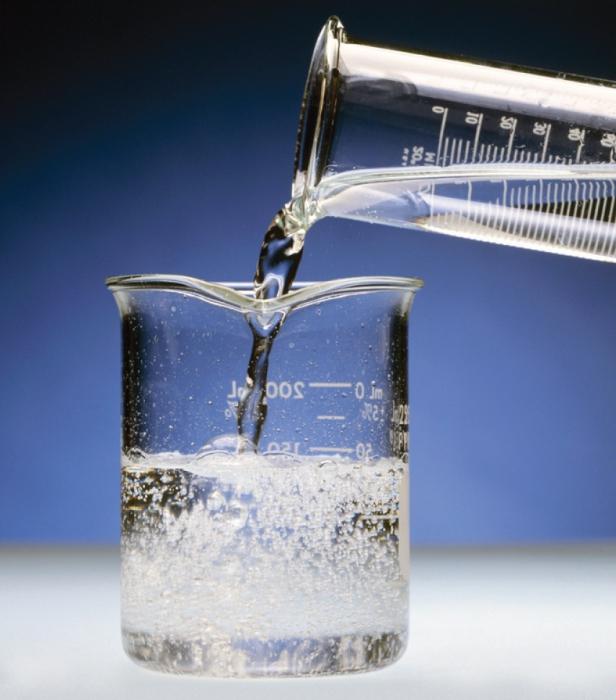
To simplify the recording of chemical processes and their better perception the reaction equation is used. It is a conditional record of the interaction of substances among themselves and, as a consequence, the formation of new products. With this schematic "image", to maintain the law of conservation of mass of matter, use numerical coefficients. This description of chemical reactions by means of numbers and symbols was proposed in 1615 by Jean Begun. Later, after the discovery of the laws of stoichiometry, quantitative values began to be used.

The chemical reaction equation is written as:

V is the reaction rate;
[A1],[A2] - concentration of substances;
K is the rate constant of the reaction, which depends on the nature of the substances interacting and the temperature;
n1, n2 The order of the reaction.
If the reaction goes on in several stages, then they form a system of kinetic equations, each of which will be described separately.

HCl + KOH-KCl + H2O
We record these substances in the form of ions, with the exception of water, because it does not dissociate. Such a reaction equation will be called full ionic.
H+ + Cl- + K++ OH- - K++ Cl-+ H2O
Now in this scheme, by the principle of similarity, from the right and left sides we "cut" the repeated ions and get:
H+ + OH- - H2ABOUT.
Also, oxidation-reduction reactions,characterized by a change in the degrees of oxidation of atoms, will have peculiarities in the compilation of a schematic record. It is necessary to determine the atoms that have changed the degree of oxidation, and make up an electronic balance, on the basis of which we then arrange the coefficients.
Thus, the chemical equation of the reactionis a schematic record of the whole complex process of the formation of new substances through decomposition, combination, substitution and exchange. It also provides qualitative and quantitative information about reactants and reaction products.
